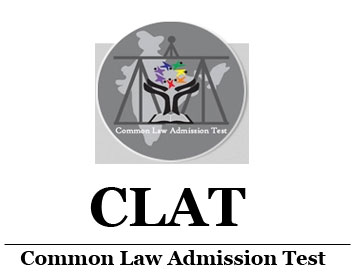(Syllabus) Pattern of CLAT Exam Under-Graduate Programme
Disclaimer: This website is NOT associated with CBSE, for official website of CBSE visit - www.cbse.gov.in
Common Law Admission
Common Law Admission Test (CLAT) – 2013
Pattern of the CLAT Paper for Admission to the Under-Graduate Programme
| Total Marks | 200 |
| Total number of multiple-choice questions of one mark each | 200 |
| Duration of examination | Two Hours |
Subject areas with weightage: |
|
| English including Comprehension | 40 Marks |
| General Knowledge/ Current Affairs | 50 Marks |
| Elementary Mathematics (Numerical Ability) | 20 Marks |
| Legal Aptitude | 50 Marks |
| Logical Reasoning | 40 Marks |
Note: There shall be a system of Negative Marking wherein 0.25 mark will be deducted for each of the wrong answers to multiple choice questions.
The different subject areas of the exam are explained as under:
English Including Comprehension
The English section will test the candidates’ proficiency in English based on comprehension passages and grammar. In the comprehension section, candidates will be assessed on their understanding of the passage given, its central theme and meanings of the words used therein, etc. The grammar section will focus on correction of incorrect grammatical sentences, filling of blanks in the given sentences with appropriate words, etc..
General Knowledge and Currents Affairs
As far as general knowledge is concerned, the candidates will be assessed on their general awareness including static general knowledge. Questions on current affairs will test candidate’s knowledge on current affairs.
Mathematics
This section will test candidate’s knowledge on elementary mathematics, i.e. mathematics taught up to Class X.
Legal Aptitude
This section will test candidate’s interest towards study of law, research aptitude and problem solving ability. Questions asked may comprise of legal propositions/ principles and a set of facts to which the said proposition/ principle has to be applied to arrive at a most reasonable conclusion. Such propositions may or may not be ‘true’ in the real sense; yet the candidates will have to assume that the given propositions are true and answer the questions accordingly. An example of such legal proposition may be that any person who speaks in a movie hall and disturbs others who are watching the movie will be banned from entering any movie theatre across India for one year.
Logical Reasoning
The purpose of the logical reasoning section is to test the candidate’s ability to identify patterns, logical links and rectify illogical arguments. It will include a wide variety of logical reasoning questions such as syllogisms, logical sequences, analogies, etc. However, visual reasoning will not be tested.
Tie-Breaking
In the event of equal marks scored by two or more candidates in the CLAT-2013, the tie will be broken by the following procedure and order:
- Higher marks in the section of legal aptitude in CLAT-2013
- Higher age
- Computerized draw of lots
<<Go Back To Main Page
Courtesy: CLAT
